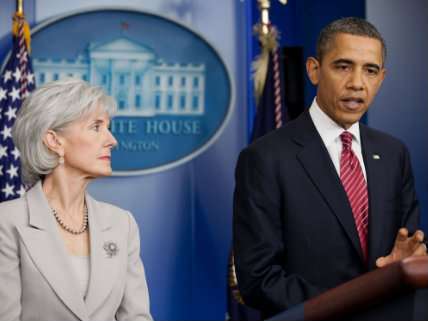House Republican Committee Reports that Only 67 Percent of Obamacare Sign Ups Have Paid First Month's Premium

One of the big remaining questions about Obamacare sign up data is how many, out of the 8 million people the administration says have signed up for coverage, have actually paid their first month's premium. It's an important question, because people who haven't paid aren't enrolled. Non-payment is virtually certain to reduce the administration's headline enrollment figure somewhat.
House Republicans have asked administration officials for this information, but they've generally been met with a shrug, and some deflection. The White House says it doesn't have that information right now. Insurers do. Maybe you could ask them?
Republicans on the House Energy & Commerce Committee decided to take the White House up on the idea. The Committee sent letters to all the insurers operating in the federal health exchange, which covers 36 states, and asked for some very specific information. How many people have paid their first month's premium? How many people have not? What age groups do the people who have paid fall into? You can read a complete copy of the letter here.
Last night, the Committee released its findings. Obamacare's official open enrollment period ended March 31, and as of April 15, the Committee reports, insurers say that only 67 percent of sign-ups have actually paid. And of those who have paid, only 25 percent are the critical "young and healthy" cohort between the ages of 18 and 34.
That really doesn't look great for the administration. If only 67 percent of the 8 million sign-ups have paid, then that reduces total enrollment down to just over 5 million. And since the administration has stressed that it's important to have a healthy demographic mix—ideally about 39 percent of enrollees should be between the ages of 18 and 34—the 25 percent figure doesn't look so great either.
But just as with the administration's evasive Obamacare reporting, the Committee figures don't tell the entire story either. For one thing, they only look at enrollment in the federal exchange. That leaves out high participation states like California and New York that ran their own exchanges.
For another, more important thing, April 15 is just too early to measure anything close to a final payment rate. A huge portion of Obamacare exchange sign ups came in the last few days of open enrollment, for coverage that doesn't begin until the first day of May. More people signed up later in the month, in the law's special open enrollment period, and in some cases their coverage won't start until June. Since the first payments aren't due until the first day coverage starts, or even as long as 10 or 15 days after, that means that lots of people who have signed up still have time to pay. The deadline hasn't arrived yet. And one thing the end of March sign up spike revealed is that when it comes to health insurance under Obamacare, lots of people wait until the very last minute to take action.
In addition, as The New Republic's Jonathan Cohn notes, there are other hints that the payment rate may be higher, or could get there by the time the deadline arrives. Yesterday, for example, health insurer Wellpoint told investors that the payment rate was about 90 percent. Officials in California have said their payment rate is 85 percent. The head of America's Health Insurance Plans, the big health insurance trade group, has said that about 85 percent have paid. And in responding to the Committee, insurers stressed that the information they were providing was not final, and that there were grace periods for many new sign-ups.
Republicans on the Committee are aware that the information they have so far is incomplete, and they are going to follow up with insurers toward the end of May. So we'll get more information—eventually. But it's going to take time. The administration could have headed off a lot of this sort of discussion by being more transparent from the start, releasing updates about payment rates, along with sign ups and demographics, and context about deadlines as well. Instead, they stonewalled and deflected. Which is how we ended with a Republican Committee trying to get this information themselves, and a report that at most suggests an eventual possibility of significant non-payment problems, but doesn't demonstrate much of anything right now. For the time being, then, we're left right back where we started, with no solid, comprehensive information to rely on about how many sign ups have paid.


Show Comments (25)